How To Catch Whiting Successfully
Are you looking to catch whiting? Then you’ve come to the right place! Here at LandBasedAnglers.com, we have all the information and resources that will help take your fishing game up a notch—from legal size and catch limits in NSW, to tips on how best to land these delicious fish.
With our ultimate guide on how to catch whiting, you’ll be able to find out which environment is ideal for finding them, what bait works best for landing them and even where some of Sydney’s top spots are located. So get ready—it’s time to start angling like a pro!
Disclosure: We only endorse products we’ve personally used or that have come highly recommended by our trusted peers. We’re proud affiliates for some of the products on our site, and as such, we may get a small commission if you purchase through one of our referral links. However, there’s no extra cost to you. Check out our affiliate disclaimer in our Privacy Policy if you’d like to learn more.
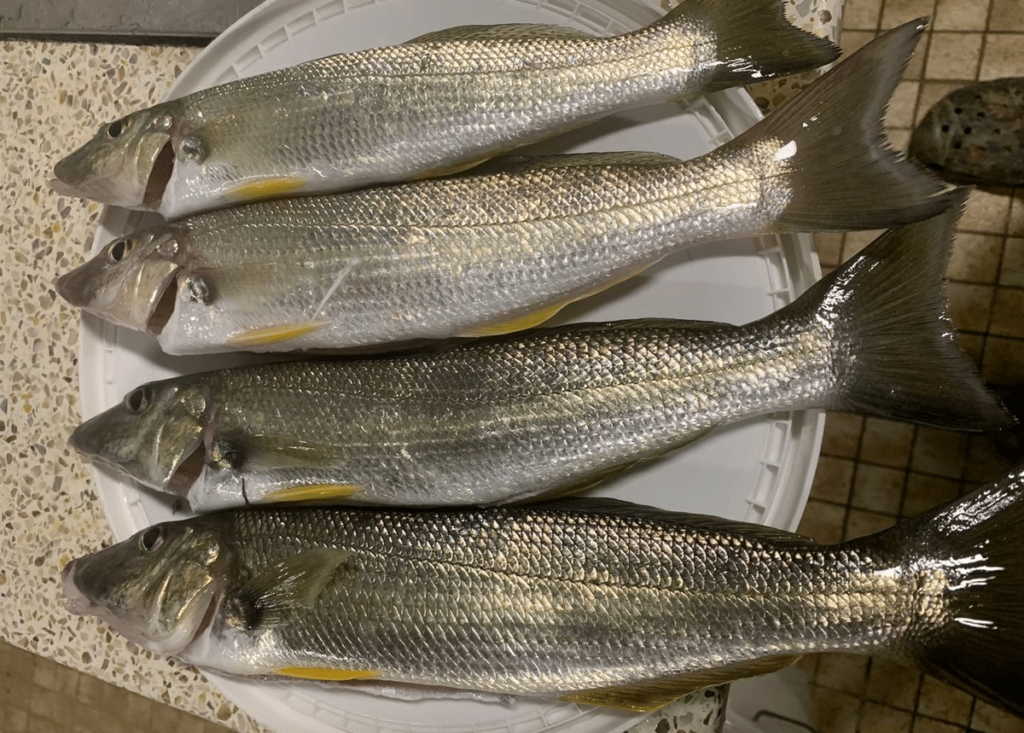
How To Catch Whiting – Tip #1
Whiting Facts
Scientific Name:
- King George whiting (Sillaginodes punctatus)
- Sand Whiting (Sillago ciliata)
Whiting is a type of fish belonging to the Sillaginidae family and can be found alongside coastlines all around the world, from Australia and New Zealand to Europe and North America. These small but mighty creatures have silver scales that glimmer in sunlight on their backs as well as sides. Whiting also possess large eyes, long snouts, complemented by three dorsal fins running along their spines.
Distribution
Among the most widespread whiting in southern Australia is the King George, which inhabits shallow inshore habitats from Victoria to New South Wales. Reaching up to 50 cm long on average, this species has a light brown or yellow hue upper body that contrasts with its silvery grey and dark spotted bottom half. The usual size of a KG whiting lies between 25-35 cm in length.
Diet
Whiting feed mainly on crustaceans such as prawns, crabs and other shellfish as well as smaller fish like anchovies or sardines when they’re available. They also eat worms which they find by digging through sand or mud flats at low tide looking for food sources buried beneath the surface.
Whiting is a popular fish species for anglers, and understanding the legal size and catch limit in NSW is essential for successful fishing. Let’s look at these regulations in more detail now.
Key Takeaway:
Whiting is a popular species of fish that can be found in coastal waters around the world. It has a light brown or yellowish colouration on its upper body and white or silvery grey with dark spots on its lower body.
How To Catch Whiting – Tip #2
Whiting Legal Size and Catch Limit in NSW
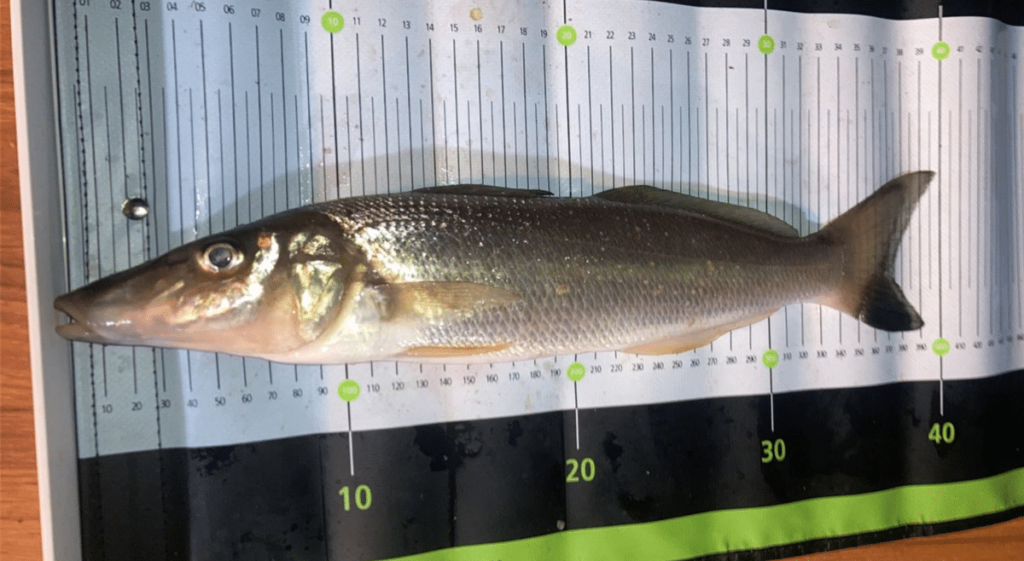
For seafood aficionados, the mild flavour and flaky texture of whiting make it a prime pick among anglers in New South Wales. Yet before you set out to capture your own, be sure that you are familiar with all important regulations.
In New South Wales, the legal size for whiting must not be less than 27 cm from snout to tail fin (excluding caudal filaments). Any fish that meets this measurement or is larger can validly be kept. Anything shorter has to be released back into its natural habitat straight away. The daily bag limit per person is twenty and no more than 20 of these may ever have in one’s possession at any given time.
It’s also important to note that there are specific rules about where you can catch them as well as what type of gear you can use when fishing for them. For example, all anglers targeting whiting must use hook-and-line gear only; no cast nets or traps are allowed under any circumstances. In addition, certain areas may have additional restrictions on size limits and/or bag limits, so make sure to check your local regulations before heading out on your next fishing trip.
How To Catch Whiting – Tip #3
Eating Quality of Whiting
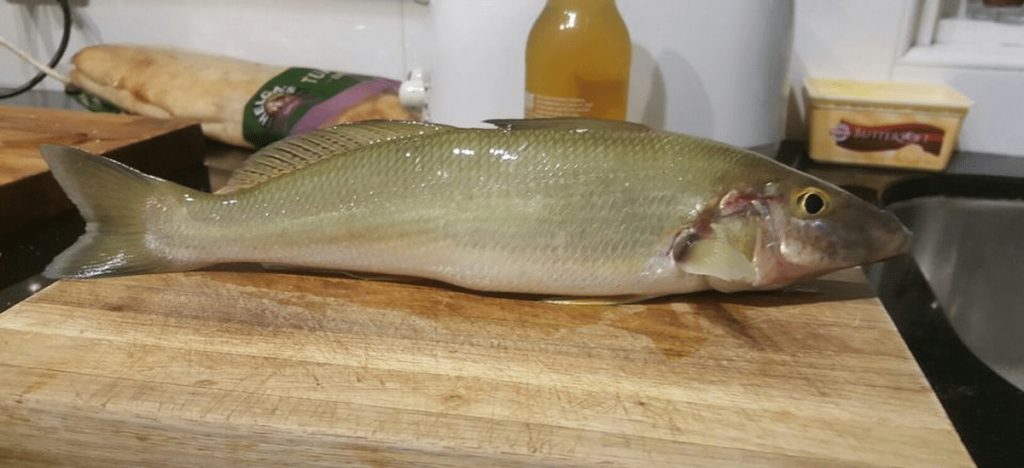
It has a mild, sweet flavour that pairs well with many different ingredients and cooking methods. Its delicate texture makes it ideal for baking, frying, or poaching. Plus, its low-fat content means you can enjoy it guilt-free.
When it comes to nutrition, whiting is an excellent source of protein and omega-3 fatty acids. A 3-ounce serving contains about 17 grams of protein and 1 gram of fat—making it an ideal choice for those looking to increase their intake of lean proteins without sacrificing taste. Additionally, the omega-3s found in whiting are essential for maintaining healthy heart function and reducing inflammation throughout the body.
To support your general health, Whiting offers a variety of vitamins and minerals. Vitamin B12 keeps your nerves in check, iron increases red blood cell production, phosphorus builds up strong bones, zinc bolsters immunity levels, selenium eliminates free radicals from the body while magnesium helps with muscle contraction. Additionally calcium fortifies teeth enamel; potassium moderates blood pressure; niacin optimizes digestion; and riboflavin preserves eye heath!
In terms of sustainability, whiting is one of the most sustainable seafood options available today due to its abundance in both wild fisheries as well as aquaculture farms around the world. This means you can feel good about enjoying this delicious fish, knowing that your purchase isn’t contributing to overfishing or other environmental issues associated with some types of seafood harvesting practices.
Overall, whiting is an incredibly versatile fish that provides plenty of nutritional benefits along with great taste. It’s no wonder why so many people love it. Whether you’re looking for a quick weeknight dinner option or something special enough for company, give this delectable whitefish a try next time you’re at the store or out fishing on your local waters.
Whiting is a delicious fish with firm, white flesh that makes it an excellent choice for the dinner table. With the right techniques and knowledge, you can maximize your chances of catching this species from land-based fishing spots. Let’s explore how to do just that in our next heading.
Key Takeaway:
Whiting is an excellent source of protein and omega-3 fatty acids, as well as several vitamins and minerals. It’s also a sustainable seafood option that can be enjoyed guilt-free. Plus, its mild flavour makes it incredibly versatile for baking, frying or poaching – making it the perfect addition to any meal.
How To Catch Whiting – Tip #4
How to Catch Land-Based Whiting
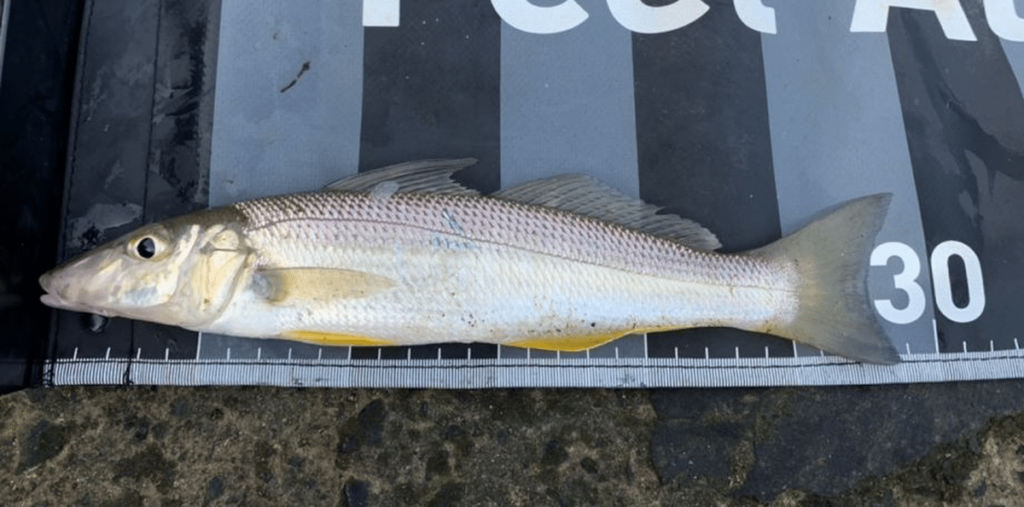
Targeting whiting from the shore is a favourite pastime among anglers, with this popular species of fish found in many areas around Australia. If you are looking to maximize your catch rate, here are some practical tips on how to catch whiting:
Bait Selection:
If you’re aiming to land a whiting from the shore, your bait selection is paramount. Whiting love delectable treats like worms, prawns and mussels as well as smaller fish species. When selecting your bait, make sure they’re are fresh as possible.
Rigging:
The most common rig used for catching whiting from shore is the running sinker rig. This involves attaching a weight at one end of your line with swivel and then tying your hook at the other end with a loop knot or snell knot. Make sure you use light tackle as this will help keep your bait close to the bottom where whiting tend to feed.
Location:
Look for areas that have plenty of structure such as rocks, reefs or weed beds as these provide cover for smaller fish which attract larger predators like whiting. Also look out for sand flats near deeper water as this can be an ideal spot to find them feeding during low tide periods when they move into shallower waters in search of food sources such as shrimp and crabs.
Tides & Weather Conditions:
Tidal movements play an important role in determining where you should fish so make sure you pay attention to tidal charts before heading out on your next trip. Additionally, windy conditions can also affect where you should cast your lines – if it’s too windy try casting closer inshore or behind structures that offer protection against strong winds such as jetties or breakwaters.
Whiting are more active during dawn and dusk, so these times are best suited if you want to increase your chances of catching them while fishing from shorelines or other land-based locations. Pay attention to tidal charts before heading out on your next trip, as well as windy conditions which can affect where you should cast your lines. If it’s too windy, try casting closer inshore or behind structures that offer protection against strong winds such as jetties or breakwaters.
With the right bait and technique, catching land-based whiting can be a rewarding experience. Now that you know how to catch them , let’s look at some of the best fishing spots in Sydney NSW for your next angling adventure.
Key Takeaway:
When fishing for whiting from land-based locations, use the right bait, a running sinker rig with light tackle and look for areas of structure such as rocks , reefs or weed beds. Additionally, pay attention to tidal charts and windy conditions when planning your trip. Best times to catch whiting are during dawn and dusk.
How To Catch Whiting – Tip #5
Where Are Whiting Most Commonly Found?
Whiting can be found in a variety of environments, making them an ideal fish for anglers looking to target them from the shore.
Beaches
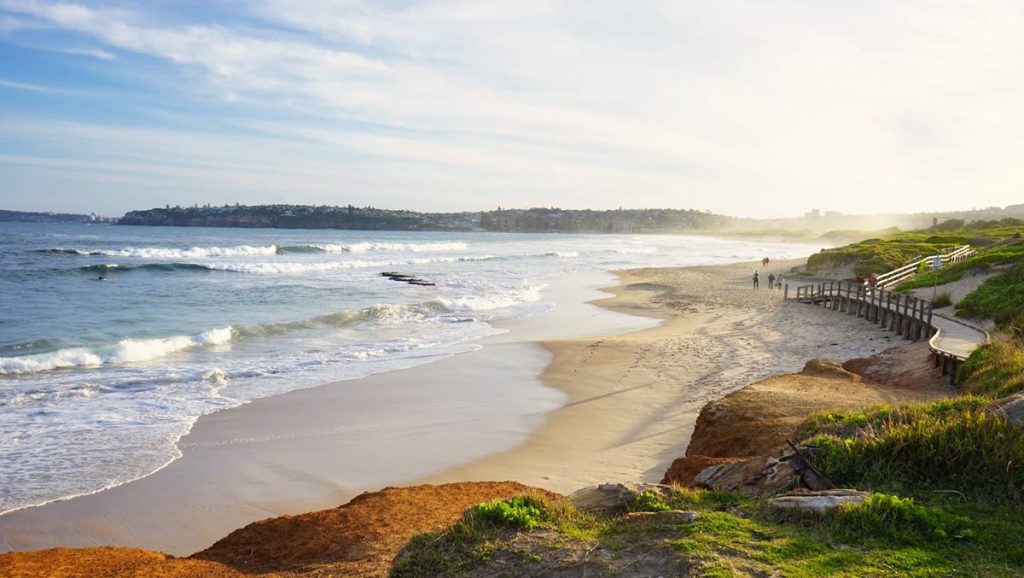
Beach fishing is one of the most popular ways to catch whiting, as they often congregate near sandy beaches and shallow waters. The best time to target these fish is during low tide when they are more likely to come closer inshore. When beach fishing for whiting, it’s important to use light tackle with small hooks and bait such as worms or mussels.
Estuaries
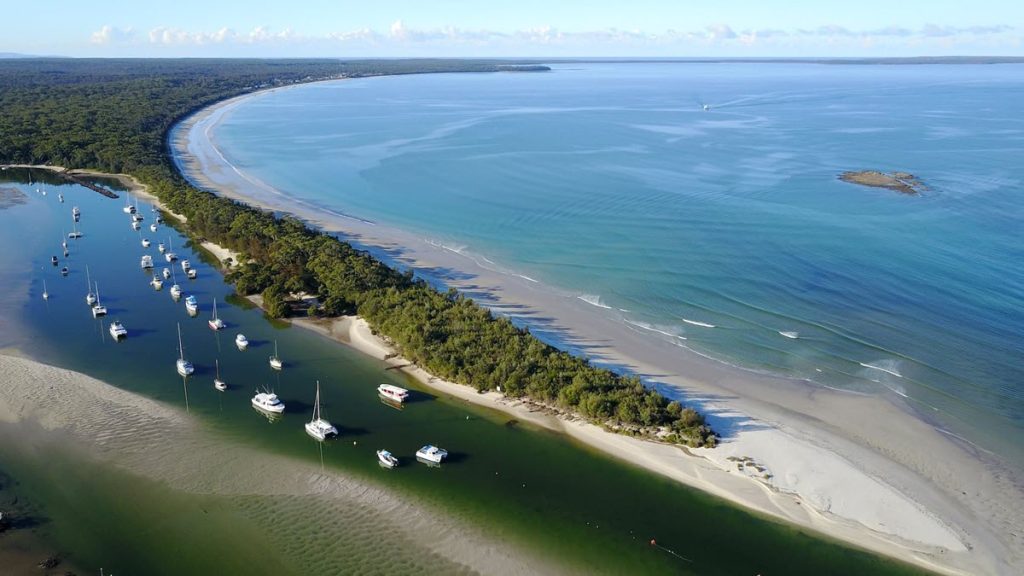
Estuaries are another great place for targeting whiting from land-based locations. These areas provide plenty of food sources, such as prawns and small baitfish, which attract large numbers of whiting into their vicinity. Estuarine systems also offer shelter from strong currents, which makes them easier targets than open ocean conditions. To increase your chances of success when estuary fishing, try using soft plastics or live baits such as nippers or shrimp on a running sinker rig that will allow you to cover more ground while searching for feeding fish.
Sand flats
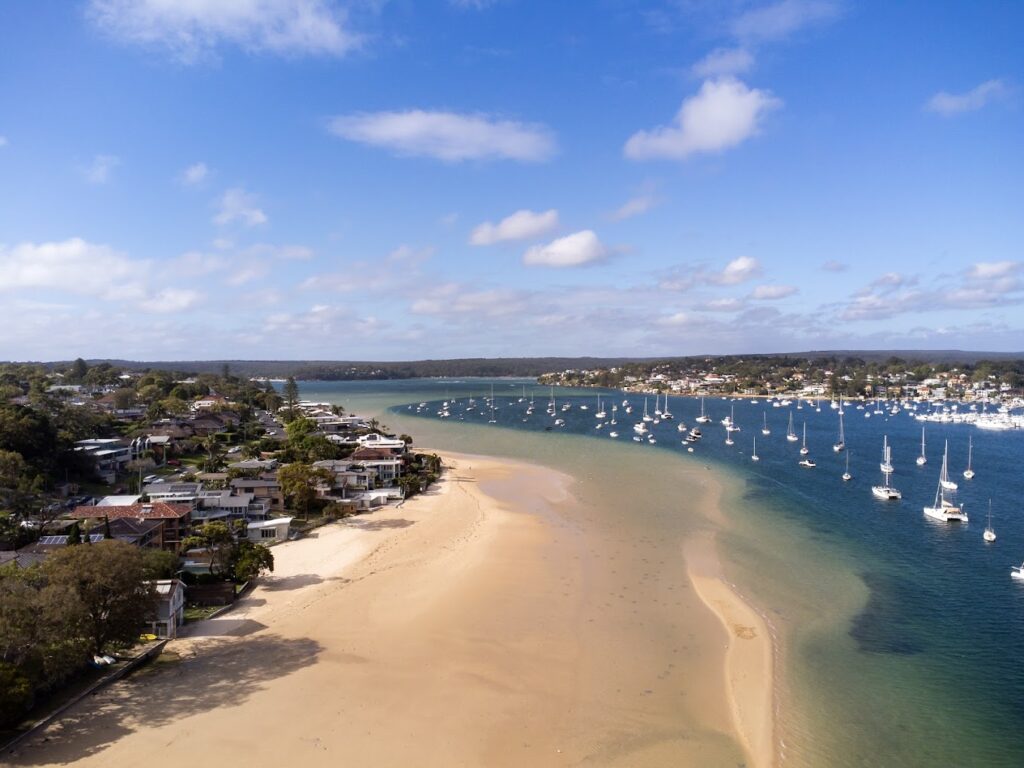
Sand flats are another excellent environment where anglers can find good numbers of whiting throughout the year. These areas tend to have abundant populations due to their sheltered nature and abundance of food sources like crabs and shellfish that draw in hungry schools of fish looking for an easy meal. When sand flat fishing, it’s important not only look out for signs like swirls on the surface but also pay attention to any changes in water clarity or depth so you know exactly where the prime spots are located at all times.
Other Habitats
Finally, there may be other environments where you can find good concentrations of Whiting depending on your location – this could include rocky headlands or even deep offshore reefs if accessible by boat. Regardless though, no matter what type habitat you choose – always remember that patience is key when targeting these elusive species so take your time before casting out your line.
Whiting can be found in many places, including coastal estuaries and inshore reefs. With the right knowledge and preparation, you’ll have a great chance of catching whiting all year round. Now let’s look at what season is best for catching whiting.
Key Takeaway:
Whiting can be caught from various shore-based environments, including beaches, estuaries and sand flats. To maximize your chances of success, use light tackle with small hooks and bait such as worms or mussels in beach fishing; soft plastics or live baits like nippers shrimp on a running sinker rig when estuary fishing; and look out for signs like swirls on the surface when sand flat fishing. Patience is key.
How To Catch Whiting – Tip #6
Best Whiting Fishing Spots in Sydney NSW

Sydney, New South Wales is a fishing paradise for whiting enthusiasts. Perfectly situated with its abundance of bays and estuaries, the city’s expansive shorelines provide endless opportunities to experience an unforgettable day out on the water. From popular beachside locations to discrete inlets, here are our top picks for Sydney’s best spots for catching whiting:
1. Botany Bay: Anglers seeking whiting should definitely look no further than Botany Bay. This expansive bay is home to an array of baitfish that draws in larger species, particularly near the mouth of the Cooks River. Here, local fishermen take advantage of plentiful opportunities for a successful catch!
2. Port Hacking: This long stretch of water provides plenty of space for anglers to cast their lines and search for whiting near shore or out in deeper waters further away from land. You’ll often find schools congregating near submerged structures such as pylons and rocks, so be sure to keep your eyes peeled.
3. Georges River, located at the heart of Sydney’s southwest suburbs, is known among locals as one of the most reliable places to catch good numbers of quality-sized whiting throughout summer months when conditions are favourable. Areas like Como Bridge and Picnic Point Parklands have shallow sand flats which are ideal for feeding activity during low tide periods.
4. Pittwater Estuary: A favourite spot amongst recreational fishers due to its close proximity to Sydney city centre; here, you can target both beach-dwelling and estuary-dwelling species such as bream, flathead and even jewfish if you’re lucky enough. Whiting also inhabit these waters all year round but tend to be more active during warmer weather when they move closer inshore in search food sources like shrimp or small baitfish found along mangrove-lined banks..
5. Manly Beach & North Harbour : Both locations offer excellent access points into sheltered bays which provide perfect habitat for juvenile fish including whiting who feed on smaller prey items found within seagrass beds located nearby – making them prime targets when casting lures or baits off beaches or jetties situated here..
Whether you’re an experienced angler looking for a new challenge or just starting out with fishing, these five spots should help get your rod bending with some decent catches. Good luck and happy fishing.
Fishing along the Sydney coastline is a thrilling experience, with many hidden spots to explore! From various beaches to secluded bays and inlets, you can get started on your fishing adventures. With some research and knowledge of the area, whiting fishermen can find prime locations where they have an excellent chance at landing their catch.
Key takeaway:
Sydney, New South Wales is an excellent destination for catching whiting. Anglers should try Botany Bay, Port Hacking, Georges River, Pittwater Estuary and Manly Beach & North Harbour to increase their chances of success.
How To Catch Whiting – Tip #7
What’s The Best Season To Catch Whiting?
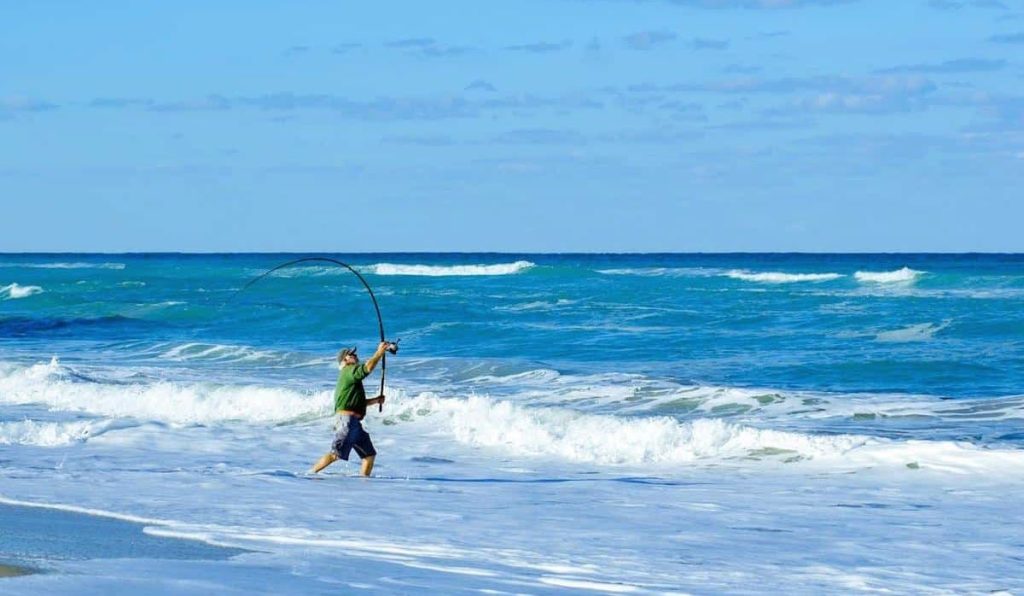
The best season to catch whiting in NSW Australia is typically during the warmer months of October through April. During this time, water temperatures are more conducive for whiting activity and they can be found in large schools around shallow reefs and estuaries.
Whiting feed on small crustaceans, worms, mollusks, and other invertebrates which are abundant during these months. The peak period for catching whiting usually occurs from late December to early March when the water temperature reaches its highest point.
How To Catch Whiting – Tip #8
What’s The Best Rod To Catch Whiting?
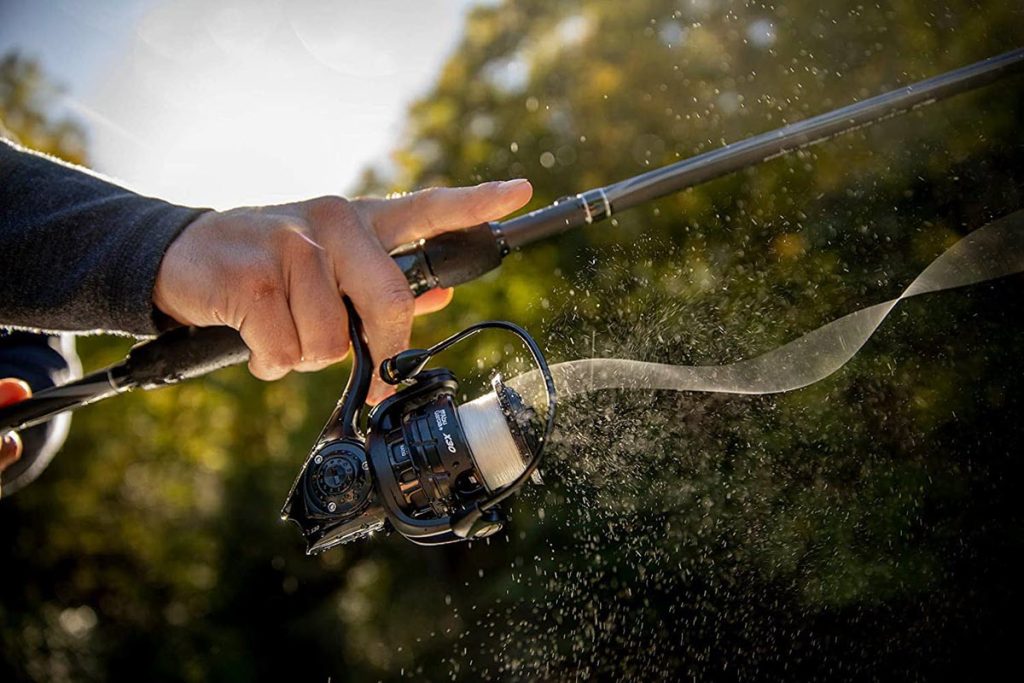
When it comes to choosing the best rod for catching whiting, there are a few things you need to consider. Rod length is important – it should be between 7 and 8 feet for shore fishing. For spin fishing, you’ll need a rod that is super sensitive with a soft tip to detect light bites.
A light action spinning rod is an ideal choice for whiting, as it will allow you to detect subtle bites and give you enough power to land them.
Finally, make sure that the rod is rated for the type of line you plan on using—if not, it could snap under pressure. You can use a light line – a 6-10 lb test is optimal.
Our recommended list of whiting fishing rods includes:
- PENN Regiment Black Ops II SP702ML Spinning Rod 7ft 4-8kg 2pc
- Abu Garcia Veritas 4.0 VRT4-S 702L Softbait Spin Rod 7ft 2-4kg 2pc
- Daiwa Laguna Spinning Rods Model: LAG662MFS (6′ 15.2cm , 2 pc., M)
From rods to reels, the right equipment is essential for successful whiting fishing. Let’s take a look at what type of reel you should be using to maximize your chances of catching these tasty fish.
How To Catch Whiting – Tip #9
What’s The Best Reel To Catch Whiting?

When it comes to catching whiting, the right reel is essential. Whiting are a relatively small species of fish and require a light tackle setup. The ideal reel size for whiting is 2000-3000, with a gear ratio of 5:1 or 6:1. Spinning reels are the most popular choice when fishing for whiting as they offer more control over your line and bait presentation than conventional reels. When selecting a spinning reel for whiting, look for one that has good drag capabilities and smooth operation so you can easily handle any unexpected runs from larger specimens.
For those just starting out, we recommend using an entry-level spinning reel such as the Shimano Sienna FE or Daiwa BG2500. Both these models have excellent drag systems and reliable construction that will stand up to years of use in saltwater conditions. For anglers looking for something with more features, we suggest checking out higher-end models like the Penn Battle II or Abu Garcia Revo SX30 which both come equipped with advanced technologies such as corrosion-resistant bearings and carbon fibre drags to help ensure smooth performance even under heavy loads.
Our Recommended Reels For Catching Whiting Include:
- Shimano NASCI 2500HG FC NASCI
- Shimano Sahara 2500
- Shimano Sedona 2500 Spinning Reel
- SHIMANO Spheros SW Inshore Spinning Reels
- Daiwa Regal LT Spin Reel-RGLT2500D-XH
- Daiwa Ninja LT 2500,
- PENN Wrath Spinning Fishing Reel – WRTH2500C
- Daiwa Regal LT Spin Reel-RGLT2500D-XH
- PENN Fierce III Spinning Inshore Fishing Reel, Size 2000,
- Penn Spinfisher VI Spinning Saltwater Reel, 2500 Reel Size,
With a variety of reel selections available when angling for whiting, choosing the right one can be difficult. From baitcasting to spinning reels, each have distinct benefits and drawbacks. Yet what line is ideal for catching this species? Let’s take a closer look!
How To Catch Whiting – Tip #10
What’s The Best Line To Catch Whiting?
Monofilament
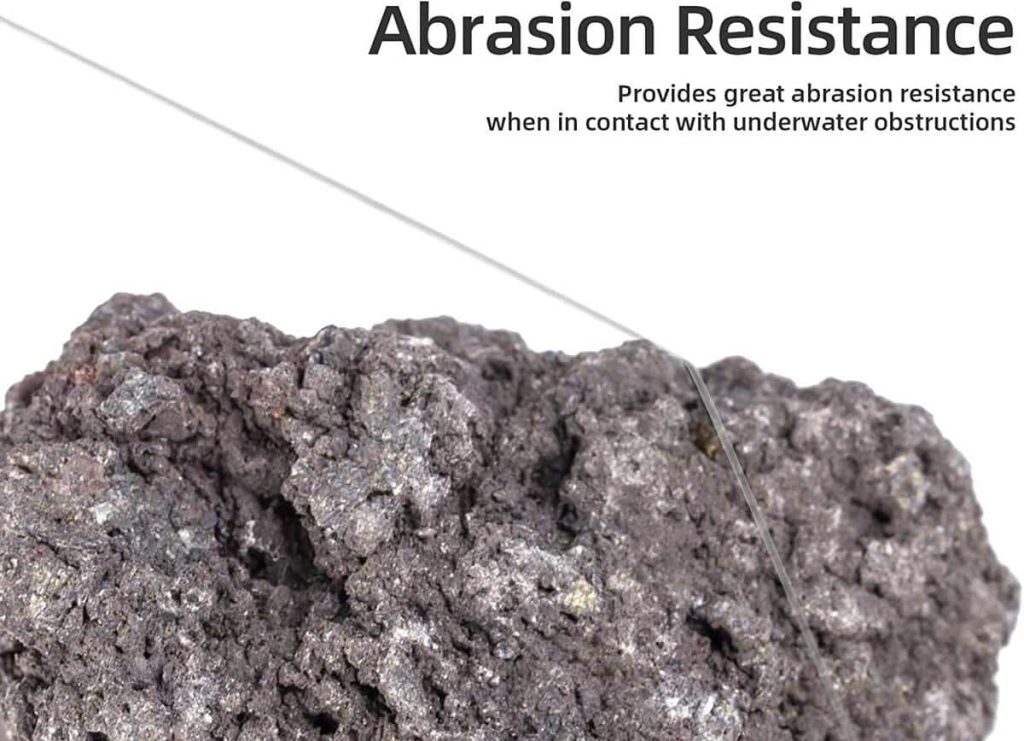
Monofilament is the ideal option when it comes to catching whiting. This material is tough, pliable and available in various sizes and hues so you can find what suits your requirements. Moreover, its knot strength as well abrasion resistance makes it perfect for targeting whiting from both onshore or offshore fishing trips. However, note that monofilament does have one downside – after extended use, this type of line stretches which would mean losing a potential catch if not properly monitored!
Fluorocarbon
Fluorocarbon is another popular choice when it comes to fishing lines for whiting. It has excellent knot strength and low visibility underwater, so it won’t spook the fish as easily as other types of lines. Fluorocarbon also sinks faster than monofilament, giving you better control over your bait presentation in deeper waters where whiting are likely to be found. However, fluorocarbon tends to be more expensive than monofilament and may not be suitable for all budgets or applications.
Here are some of our top-choice monofilament and fluorocarbon lines for Whiting:
- Berkley Trilene Big Game – Mono Line
- Hi-Seas Quattro Monofilament Line
- KastKing Monofilament Superior Fishing Line
- Stren High Impact Monofilament Fishing Line
- Daiwa J-Fluoro Fluorocarbon Leader
- Berkley Vanish Fluorocarbon
- Seaguar Blue Label Fluorocarbon Fishing Line Leader
- Spiderwire EZ Fluorocarbon Fishing Line
- Yo-Zuri H.D. Carbon Fluorocarbon Leader Line
Braid
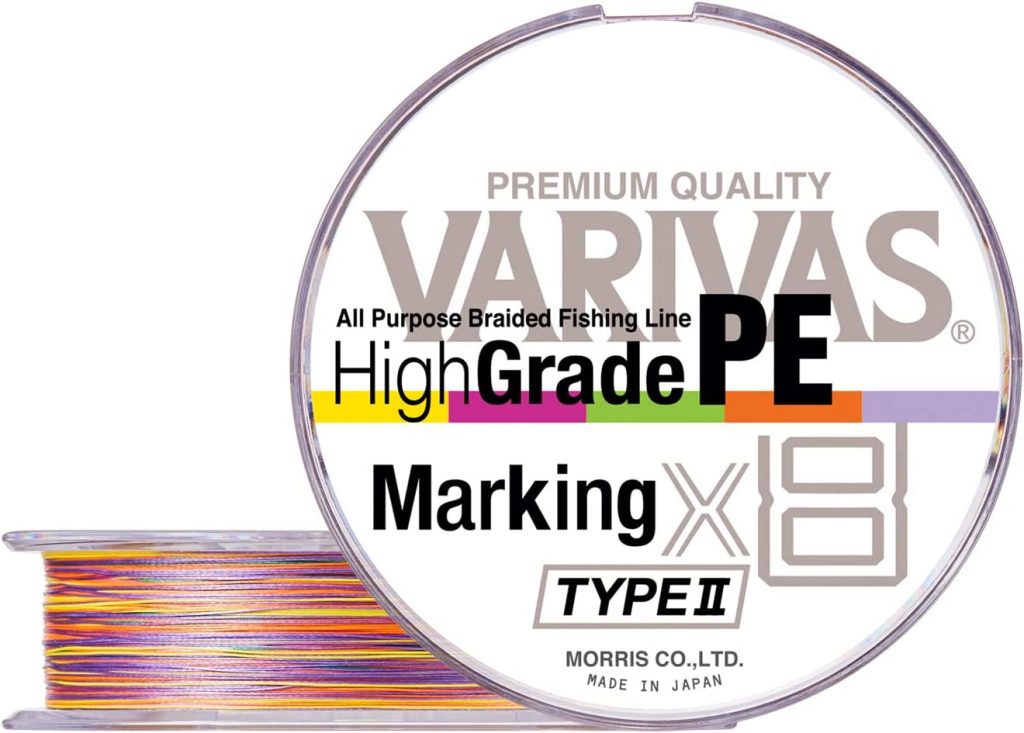
Braid is a third option when choosing a fishing line for whiting angling. Braid offers superior sensitivity compared to mono or fluoro due its thin diameter and lack of stretchiness—allowing you feel even the slightest nibble from wary fish like Whiting with ease. Plus braid doesn’t absorb water like mono does, so it’s less prone to weakening over time due to moisture absorption – great news if you’re planning on using this type of line regularly. On the downside, however braided lines tend not to have much abrasion resistance, so they may need replacing more often depending on how hardy your target species are known to fight back against being reeled in.
Here are some of our favourite braids to use when fishing for whiting:
- Daiwa J-Braid 500M 8-Strand Woven Round Braid Line
- Daiwa J-Braid 300M 8-Strand Woven Round Braid Line
- VARIVAS HighGrade PE x8 Braid Line
- Hercules 8 Strands Braided Fishing Line
- KastKing Superpower Braided Fishing Line
Ultimately, there isn’t one definitive answer as each angler will have their own preferences based upon budget constraints, environmental conditions and personal preference. However, by considering these three options – mono/fluoro/braid – you should find yourself well equipped with enough knowledge and experience needed to make an informed decision about what kind best suits your needs when looking to catch some tasty Whiting.
Key Takeaway:
When choosing a fishing line for whiting, three main options are available: monofilament, fluorocarbon and braid. Each has its own advantages and disadvantages to consider based on budget, environment and personal preference.
How To Catch Whiting – Tip #11
What’s The Best Rig To Catch Whiting?
When it comes to catching whiting, two of the most popular rigs are the running sinker rig and the paternoster rig. Both of these rigs can be easily made with basic fishing tackle and a few simple steps.
Running Sinker Rig
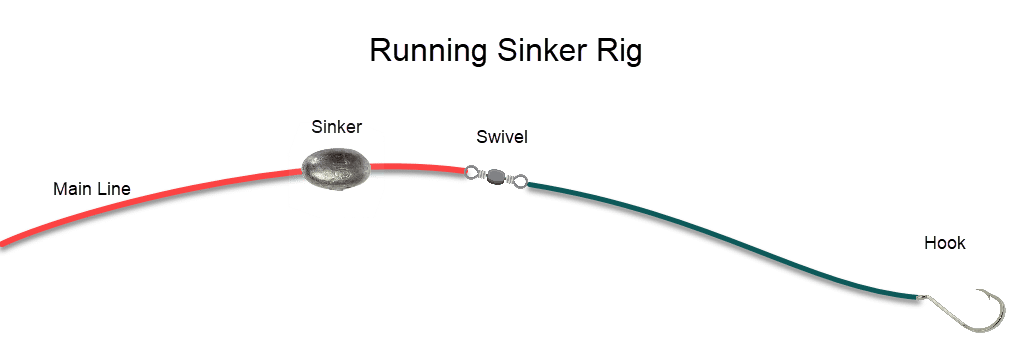
The Running Sinker Rig is an excellent choice for targeting whiting in shallow water. To make this rig, start by threading your line through a swivel and then tie on a hook at one end. Next, attach a weight (sinker) to the other end of your line about 18 inches above the hook. Finally, add some bait such as squid or worms onto your hook and you’re ready to go. This type of rig works best when cast out into shallow areas where whiting tend to congregate.
Paternoster Rig
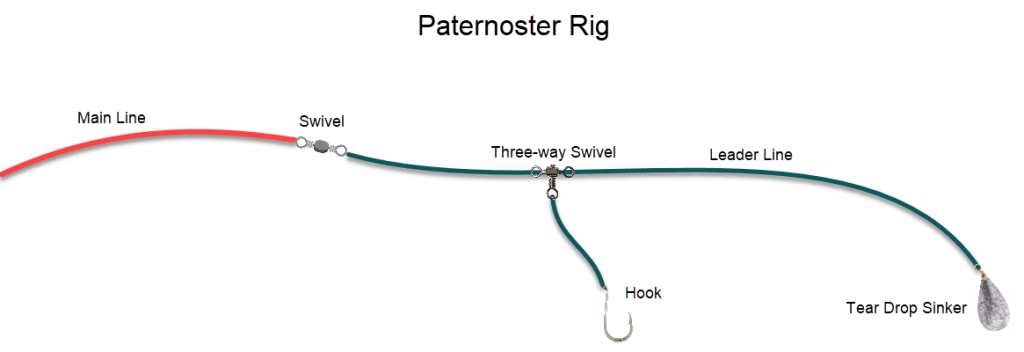
The Paternoster Rig is another great option for catching whiting in deeper waters. To make this rig, start by tying on two hooks at either end of your line – one near the top and one near the bottom – with each separated by about 12-18 inches apart from each other. Then add weights (sinkers) between both hooks so that they will stay suspended in midwater column. Once everything is set up correctly, all that’s left to do is add some bait such as shrimp or sandworms onto both hooks and wait for those hungry whiting to bite.
How To Catch Whiting – Tip #12
What Are The Best Baits to Catch Whiting?
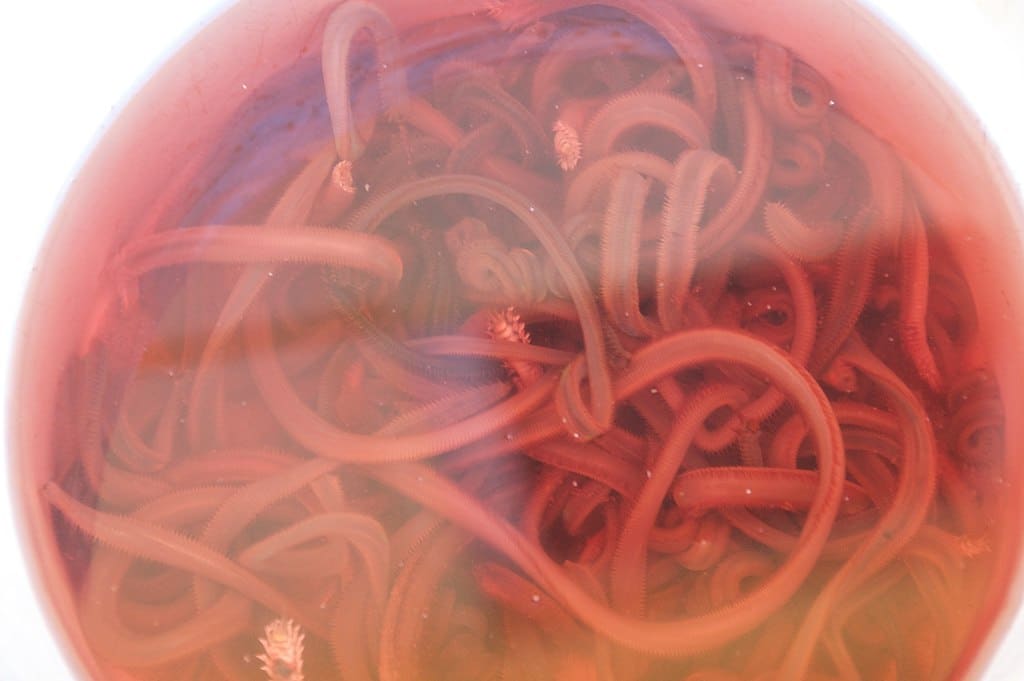
Whiting are a schooling fish that can be found in shallow waters along many coastlines around the world. They’re not particularly picky eaters and will take a variety of baits, but some are more effective than others. Here’s what you need to know about the best baits for whiting:
The Best Baits For Catching Whiting Include:
- Pipis
- Peeled Prawns
- Sandworm
- Bloodworms
- Cut-Up Squid
- Fish Pieces
- Whitebait
- Pilchards
- Raw chicken
- Yabbies
- Small Clams
- Mussels
- Strips Of Crab Meat
- Other Shellfish
These types of baits have been used successfully by anglers around the world since time immemorial so don’t discount them just because they aren’t flashy. Just remember that these types of natural baits tend to break down quickly so if you plan on using them make sure you bring plenty with you so that you don’t run out mid-session.
How To Catch Whiting – Tip #13
What Are The Best Lures to Catch Whiting?

Whiting are a popular target for anglers around the world, and they can be caught from shore or boat. But what lures should you use to catch them? It all depends on the type of whiting you’re after.
For beach-caught whiting, it’s best to use small metal jigs with soft plastic tails. These lures work well because they imitate small baitfish that live in shallow waters near beaches. You can also try using spoons or spinners if you want to cover more water quickly.
If you’re fishing off a pier or jetty, then your best bet is to use soft plastics like grubs and worms rigged on light jigheads. These lures mimic the natural prey of whiting and are very effective when fished slowly along the bottom structure of piers and jetties.
Finally, if you’re fishing from a boat, then trolling with minnow-style hard body lures is an excellent way to target whiting in deeper waters. Trolling allows you to cover large areas quickly while still being able to present your lure accurately where fish may be holding up in current lines or eddies near structure such as reefs or wrecks.
The best lures for catching Whiting include:
- ZMAN Grubz 2.5″ – 8 Pack Soft Bait – Motor Oil
- Berkley Gulp! Sandworm,Soft Bait – 2in | 5cm
- Berkley Gulp! Minnow Soft Fishing Bait Smelt 3″ – Qty. 12
- Z-MAN Slim SwimZ 2 1/2 inch Soft Plastic Paddle Tail Swimbait 8 Pack
- Z-MAN EZ ShrimpZ 3.5 Inch 4 Pack Unrigged Soft Plastic Shrimp Bait
- ZMAN 2.5″ Slim Swimz Lures- 8 Pack – Elaztech [Colour: Greasy Prawn]
- Zman 2.5 Grubz Electric Pink
How To Catch Whiting – Final Thoughts
Conclusion
Ultimately, learning how to catch whiting can be incredibly beneficial and enjoyable. If you have the right knowledge of their behavior and suitable equipment, reeling in these delicious fish will become second nature! It doesn’t matter whether your fishing locale is off the coasts of Australia or a local lake—just make sure that you’re aware of the legal size requirements for catching whiting in NSW along with educational information on which environment they usually inhabit as well as what bait works best.
Finally, head to one of Sydney’s best spots for Whiting fishing and get ready to reel them in! Good luck with your next catch whiting adventure!
Are you looking to be a whiting-catching pro? At LandBasedAnglers.com, we have the perfect tools for you! Our step-by-step tutorials and directions are proven to help even novice anglers become experts in no time at all. With our resources, your fishing trips will always be successful – it’s guaranteed!
You Might Also Like:
If you enjoyed reading this blog post on How To Catch Whiting, you might also be interested in:
- 10 Best Fishing Chairs: Catch Your Breath and Catch Your Fish
- 8 Best Fishing Split Ring Pliers for Serious Anglers
- 8 Best Braid Scissors: Snip Your Way to Fishing Success
- Hooked on Comfort: 5 Best Fishing Stools You Need to Try
- How to Catch Murray Cod: 12 Masterful Tips For Success
- How to Catch Australian Bass | 13 Proven Tips by Pro Anglers
- 10 Best Fishing Pliers All Anglers Need in Their Tackle Box
- How to Catch Bonito: 13 Amazing Tips from Master Anglers
- How to Catch Mangrove Jack: 5 Tips for a Successful Fishing Trip
- 10 Best Waterproof Dry Bags to Keep Your Gear Safe and Dry
- 10 Best Fishing Gaffs for Landing Big Fish Quick & Easily
- 10 Best Waterproofing Sprays to Keep Your Gear Bone-Dry
- 14 Best Live Bait Buckets to Keep Your Fishing Game Strong
- 12 Best Fishing Backpacks for the Avid Angler in 2023
- Best Mono Fishing Line for 2023: Our Top 12 Trusted Picks
Tags:
#How To Catch Whiting, #How To Catch Whiting Tips, #How To Catch Whiting Guide, #How To Catch Whiting for Beginners, #How To Catch Whiting Land-Based Anglers

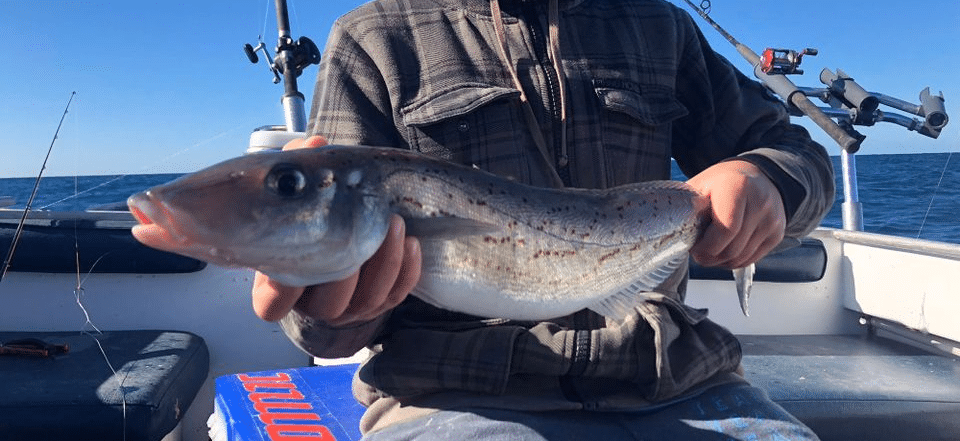
Recent Comments